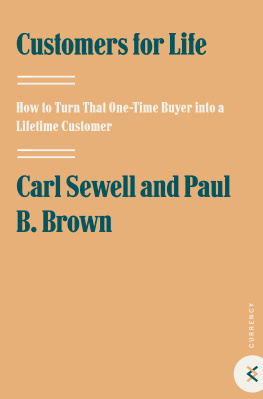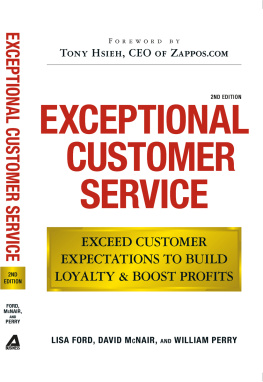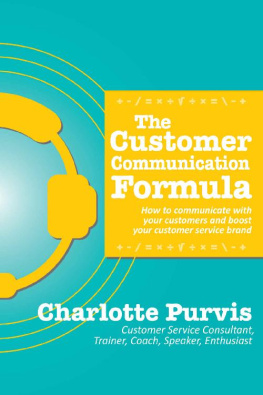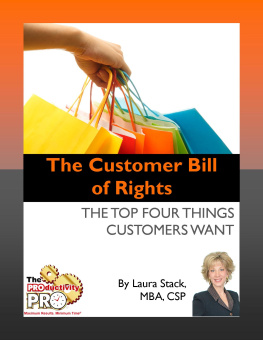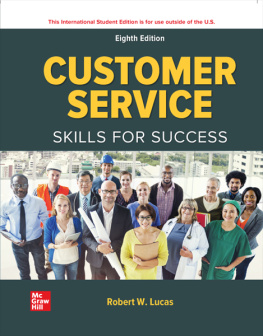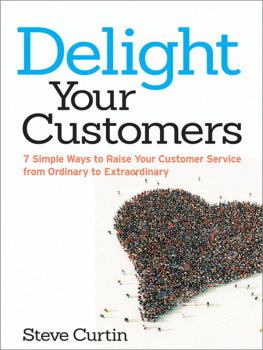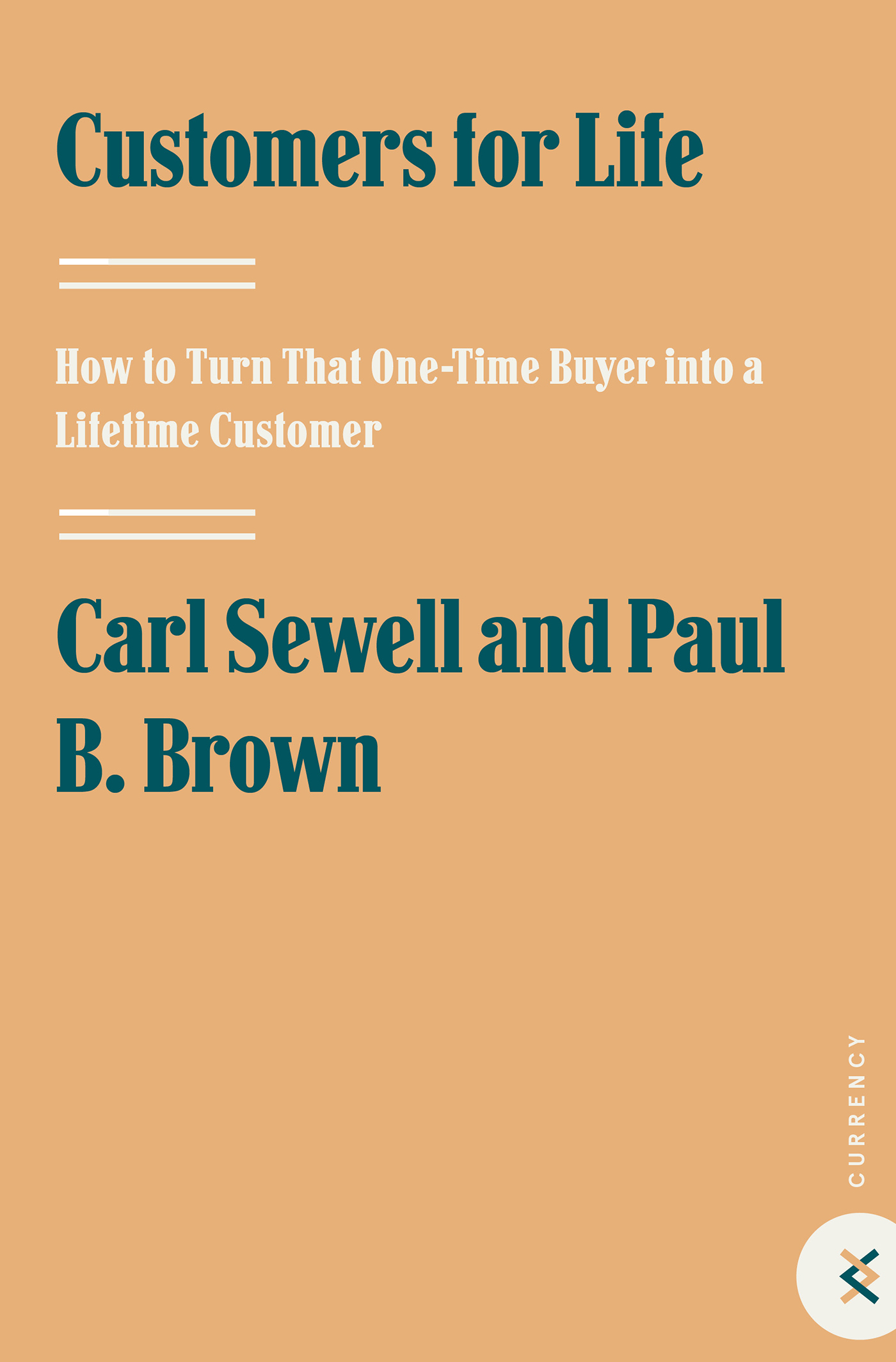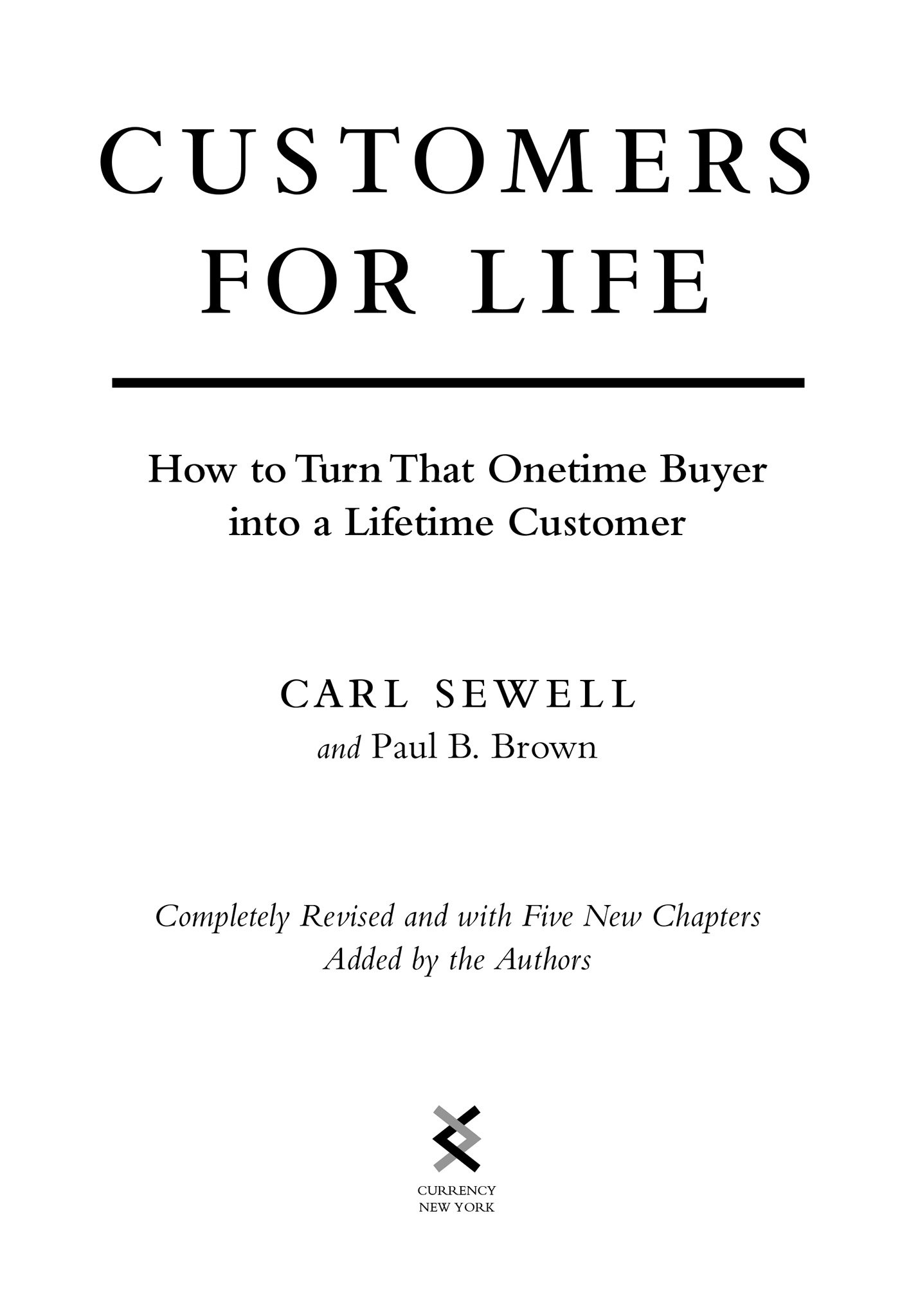Carl Sewell - Customers for Life: How to Turn That One-Time Buyer Into a Lifetime Customer
Here you can read online Carl Sewell - Customers for Life: How to Turn That One-Time Buyer Into a Lifetime Customer full text of the book (entire story) in english for free. Download pdf and epub, get meaning, cover and reviews about this ebook. year: 2009, publisher: Crown, genre: Business. Description of the work, (preface) as well as reviews are available. Best literature library LitArk.com created for fans of good reading and offers a wide selection of genres:
Romance novel
Science fiction
Adventure
Detective
Science
History
Home and family
Prose
Art
Politics
Computer
Non-fiction
Religion
Business
Children
Humor
Choose a favorite category and find really read worthwhile books. Enjoy immersion in the world of imagination, feel the emotions of the characters or learn something new for yourself, make an fascinating discovery.
- Book:Customers for Life: How to Turn That One-Time Buyer Into a Lifetime Customer
- Author:
- Publisher:Crown
- Genre:
- Year:2009
- Rating:4 / 5
- Favourites:Add to favourites
- Your mark:
Customers for Life: How to Turn That One-Time Buyer Into a Lifetime Customer: summary, description and annotation
We offer to read an annotation, description, summary or preface (depends on what the author of the book "Customers for Life: How to Turn That One-Time Buyer Into a Lifetime Customer" wrote himself). If you haven't found the necessary information about the book — write in the comments, we will try to find it.
Drawing on his incredible success in transforming his Dallas Cadillac dealership into the second largest in America, Carl Sewell revealed the secret of getting customers to return again and again in the original Customers for Life. A lively, down-to-earth narrative, it set the standard for customer service excellence and became a perennial bestseller. Building on that solid foundation, this expanded edition features five completely new chapters, as well as significant additions to the original material, based on the lessons Sewell has learned over the last ten years.
Sewell focuses on the expectations and demands of contemporary consumers and employees, showing that businesses can remain committed to quality service in the fast-paced new millennium by sticking to his time-proven approach: Figure out what customers want and make sure they get it. His Ten Commandants provide the essential guidelines, including:
Underpromise, overdeliver: Never disappoint your customers by charging them more than they planned. Always beat your estimate or throw in an extra service free of charge.
No complaints? Somethings wrong: If you never ask your customers what else they want, how are you going to give it to them?
Measure everything: Telling your employees to do their best wont work if you dont know how they can improve.
Carl Sewell: author's other books
Who wrote Customers for Life: How to Turn That One-Time Buyer Into a Lifetime Customer? Find out the surname, the name of the author of the book and a list of all author's works by series.

